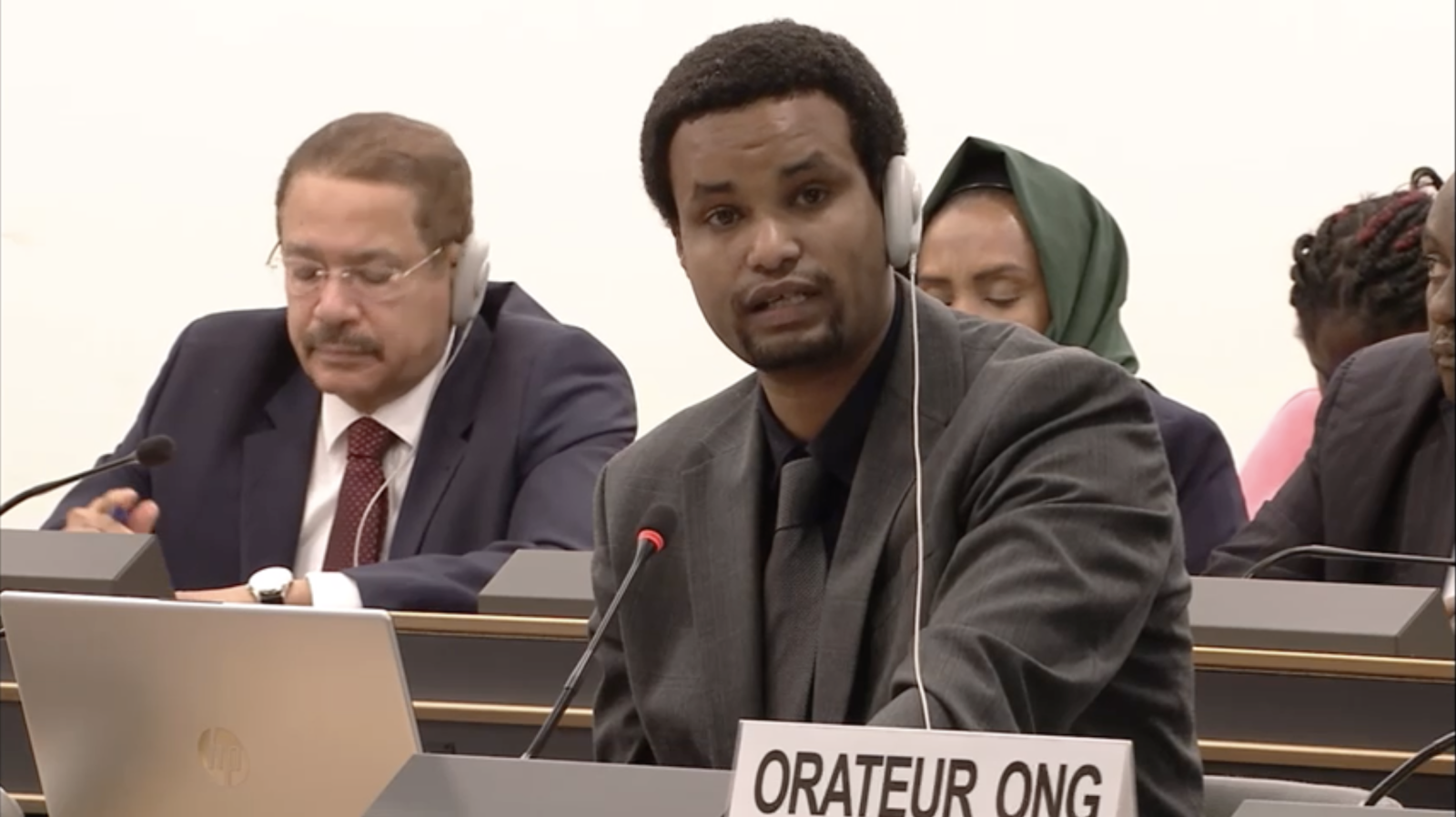Point of No Return: Starvation, Displacement, and the Weaponisation of Aid
Introduction
As a result of a man-made starvation, the humanitarian situation in Gaza has reached unprecedented levels of severity. Due to the embargo imposed by Israel, we have witnessed families desperate to access food aid to feed their starving children, facing deadly violence, with reports of people being shot and killed. It should be noted that the Israeli officials have openly declared, immediately after the event of 7 October 2023, their intention to halt all aid and resources to the Palestinian population, intensifying a long-standing blockade that has been in place since 2016. While there is limited approval of aid being let into Gaza as of 27 July 2025, the amount of aid that is permitted into the Strip is critically insufficient and falls too short of sustaining UN relief efforts or meeting the urgent needs of Gaza’s 2.1 million residents.
The primary concern is not just the aid itself, but the unsafe conditions surrounding its delivery; humanitarian convoys are increasingly vulnerable to attacks, including shootings near aid distribution points. Compounding this crisis, severe fuel shortages threaten to plunge essential services into darkness, as current fuel supplies are nowhere near sufficient to maintain critical operations. Although limited amounts of fuel have been allowed into parts of Gaza as of 9 July 2025, these volumes remain far from enough to prevent the collapse of vital services.
OCHA 29/7/2025
The Blocking of Humanitarian Aid
The severe embargo imposed on civilians in Gaza has escalated to catastrophic levels, with the population on the brink of famine as of July 2025. On 19 May 2025, limited aid deliveries resumed, but from then until 14 July 2025, only 1,633 trucks were able to enter Gaza through the Kerem Shalom and Zikim crossings - just 62% of the 2,600 trucks submitted to Israeli authorities, and 74% of those approved. The United Nations Office for the Coordination of Humanitarian Affairs (OCHA) continues to report alarming levels of malnutrition, especially among women and children. Nearly 100,000 women and children are suffering from severe acute malnutrition and urgently need treatment. By 15 July 2025, OCHA confirmed that around 6,000 truckloads of humanitarian supplies- including food, medicine, and other essentials were still awaiting clearance to enter Gaza. Despite this, humanitarian partners have managed to deliver some critical assistance: as of 16 July, roughly 1,600 local trucks helped distribute essential items such as wheat flour, medical and hygiene supplies, and clean water. They also supported 84 community kitchens serving 260,000 meals per day, delivered 17,000 cubic metres of clean water through 1,300 collection points, and deployed 21 Emergency Medical Teams, who provided hundreds of weekly health consultations for women and girls. Yet these efforts barely scratch the surface of the immense need. On 17 July, just over half of the humanitarian coordination requests submitted to Israeli authorities were facilitated, allowing for limited water, fuel, hygiene, and medical deliveries, while six missions were denied or obstructed. Then, on 21 July 2025, more than a dozen people reportedly died of hunger within a single 24-hour period. Meanwhile, humanitarian movements remain severely restricted, with World Food Program convoys met by desperate crowds and facing logistical nightmares, including damaged roads, armed hostilities, checkpoint delays, and interference from criminal gangs.
Displacement
As access to necessities becomes increasingly limited, the relentless issuance of displacement orders further compounds the crisis. Between 15 and 17 July 2025, the overall displacement of Palestinian people has reached over 737,000 civilians, 37 per cent of the population. Displacement orders continue to uproot families, forcing civilians into increasingly overcrowded and unsafe areas. Many of the makeshift shelters lack proper infrastructure or trained personnel to manage such an overwhelming crisis. Conditions have deteriorated to such an extent that even the most basic services such as shelter, food, water, and medical care are strained to the breaking point.
OCHA 14/7/2025
Gaza Humanitarian Foundation
Established in February 2025, the Gaza Humanitarian Foundation is a U.S.-based organisation supported by the Israeli government, which aims to deliver humanitarian aid in Gaza. The sites established by the GHF have been criticised for poor management, with staff lacking the necessary training and experience to handle operations of such magnitude. This inadequate preparedness has contributed to the worsening conditions for those seeking refuge. Additionally, there have been serious concerns about the use of excessive and indiscriminate force against unarmed, starving civilians in these areas. Reports indicate that artillery shells landed near the Israeli security corridor, Morag Corridor, while mortar rounds were fired to control the movement of people toward the southern corridor. These actions, involving both IDF soldiers and the Gaza Humanitarian Foundation, have raised alarm over the protection and safety of displaced Palestinians. More than 1,300 starving people have been killed or injured while attempting to access aid. Eyewitness accounts and visual evidence have further underscored the lack of safety and organisation at the site. Accessing the aid has become a perilous ordeal for civilians, and the Gaza Humanitarian Foundation has replaced a broader UN-led system of over 400 centres. However, these new sites are located in evacuation zones and often open for only a few minutes at a time, forcing starving Palestinians to risk their lives navigating dangerous corridors patrolled by tanks, drones, and armed personnel. Reports describe night-time journeys, hunger-driven desperation, and routine exposure to live gunfire. Many civilians return empty-handed despite multiple attempts, and more than a thousand people have died since May 2025 while trying to collect basic food rations. This environment, intended to provide life-saving aid, has instead become a deadly obstacle course - one that is both physically and psychologically scarring for those enduring Gaza’s humanitarian collapse. Rather than creating a parallel system, supporting existing UN agencies already providing aid could have ensured more efficient, safer, and better-coordinated humanitarian relief.
OCHA 30/4/2025
Critical Fuel Shortages Threaten Humanitarian Operations
Fuel is the critical lifeline that sustains Gaza’s basic services. It is needed to power hospitals, water systems, sanitation networks, ambulances, and every aspect of humanitarian operations. Without proper access to fuel, UN agencies are forced to stop responding to crises due to the lack of resources. On the 9th of July, 2025, Gaza received its first provision of 75,000 litres of fuel, the first in 130 days. Israeli authorities agreed to allow two trucks of fuel to Gaza per day, 5 days a week, via the Kerem Shalom crossing. This is an improvement for the life-saving operations in Gaza; however, there is also the struggle of ensuring it is stored and moved properly. Fuel supplies to Kerem Shalom have remained limited since deliveries resumed. Over the past week, the UN has managed to deliver just over 600,000 litres of diesel and 35,000 litres of critically needed benzene. However, the volume has been restricted due to the Israeli authorities allowing only 14 trucks through during this time. This amounts to an average of 55,000 litres per day, even with the crossing closed on weekends. The process of accessing fuel through the Kerem Shalom crossing is marked by extreme difficulty and danger. On the Israeli side, fuel is first funnelled into an underground pipeline. However, retrieving it in Gaza requires Palestinian fuel trucks to navigate a tightly secured, militarised zone. This movement is only permitted when Israeli authorities temporarily cease military activity and issue a brief clearance window. These short, unpredictable openings leave little room for safe operation. As a result, the retrieval process is not only hazardous but also highly unreliable, causing severe interruptions in the delivery of essential fuel supplies. The UN and its partners continue to stress the urgent need for hundreds of thousands of litres of fuel each day to sustain life-saving humanitarian operations. Despite these challenges, the week of the 10th of July, there were some medical shipments including 238 pallets - among them, 10 cold-chain pallets with nearly 1,400 units of blood and over 1,500 doses of plasma, enough to cover urgent needs for about 10 days. In its report on 15 July, OCHA states, “The UN and its Humanitarian partners need hundreds of thousands of litres of fuel each day to keep essential life-saving and life-sustaining operations going.”
Hospitals in Gaza continue to operate under extreme strain, struggling to keep up with the rising number of casualties while facing a critical shortage of fuel to power generators. Facilities like Nasser Medical Centre are functioning at over 300 per cent of their capacity, with conditions so dire that as many as 5 babies are forced to share a single incubator. Without a steady supply of fuel, these hospitals risk shutting down, putting dozens of patients who depend on ventilators and incubators in grave danger. Additionally, the closure of several water wells due to fuel shortages has raised concerns about the spread of diseases such as meningitis, acute hand, foot, and mouth disease, and bloody diarrhoea. The lack of essential medical supplies has further exacerbated health crises, with only 63 out of 170 health centres operational and approximately 70 per cent of vital medicines unavailable.
Women and children
Women and children continue to bear the brunt of the humanitarian catastrophe unfolding in Gaza. The destruction of infrastructure, especially hospitals, has left 150,000 pregnant and lactating women without access to medical care. These actions can be described as a femi-genocide (UNHCHR). While infants are being born prematurely and dying shortly after birth, the Israeli government has been blocking the entry of baby formula. Other babies are being born with unprecedented genetic mutations, likely linked to prolonged starvation, severe trauma, and exposure to toxic and potentially radioactive substances. Over 5,800 boys and girls are being diagnosed as malnourished in hospitals. Palestinian mothers are being forced to witness their children endure starvation, injury, and even death, an unimaginable form of psychological trauma. The lack of humanitarian assistance has also brought about overcrowding, which has contributed to alarming increases in sexual violence, intimate partner violence, and other forms of abuse. In 2025 alone, 56 per cent of denied entry requests were for Emergency Medical Teams, severely hampering the ability to deliver life-saving care. For the fourth consecutive month, rates of severe malnutrition among children have continued to rise, underscoring the deepening crisis and the devastating impact on Gaza’s most vulnerable (UNICEF).
OCHA; Photo: PRCS 17/7/2025
Education and schools
For the past six months, all schools in Gaza have remained closed, leaving 625,000 students without access to education. Since the start of the hostilities, thousands of students have been killed or injured, and 87.7 per cent of school buildings have been destroyed. As of 9 July, UN partners have begun preparing students for the General Secondary Exams by offering preparatory courses, providing a glimmer of hope amid the devastation. Between October 2023 and June 2025, 626 temporary learning bases have been established. Out of those learning bases, only 299 are operational as of 10 July, due to ongoing displacement orders.
Conclusion
The humanitarian catastrophe unfolding in Gaza is not just a moral failure; it is a legal one. Under international humanitarian law, the Israeli government is bound to protect civilians, facilitate humanitarian aid, and uphold the principles of proportionality and distinction. As members of the international community, we must hold ourselves and each other accountable to these standards without exception or political convenience. Civilians must be protected wherever they are, humanitarian workers must be shielded, and aid must be allowed to flow at scale.
In mid-July 2025, the Hague Group convened an emergency ministerial meeting in Bogotá, hosted by Colombia and co-chaired with South Africa, where over 30 countries came together to coordinate legal and diplomatic action in response to what many described as a policy of collective punishment and potential genocide in Gaza. Several states pledged concrete steps, from arms embargoes and trade restrictions to support for international court rulings, to ensure accountability and uphold the global legal order.
These developments send a clear signal: impunity must end. States that have ratified the Rome Statute and are members of the International Criminal Court (ICC) have a legal obligation to enforce its decisions, including the arrest warrants issued for individuals accused of war crimes. The continued ability of indicted figures to travel freely, despite the arrest warrant from the ICC, is unacceptable. We must not accept a world in which humanitarian workers are shot at, children are starved by design, and legal institutions are ignored when politically inconvenient. International law demands the protection of civilians, the unrestricted flow of aid, and accountability for those who violate these principles, no matter their position or power.
Geneva International Centre for Justice strongly condemns the obstruction of humanitarian aid, the use of starvation as a weapon of war, and ongoing violations of international humanitarian law in Gaza. We urge the international community - including UN member states, the European Union, and ICC state parties- to uphold their legal obligations by supporting the enforcement of ICC arrest warrants and ensuring compliance with ICJ rulings. The deliberate denial of food, water, and medicine to a besieged population is not only a war crime; it is a tool of genocide. As the UN Special Rapporteur on the situation of human rights in the Palestinian territory has made clear, starvation is being employed as a calculated method of warfare — one that aims to erase the conditions of life necessary for survival. “This is not a warning; this is a call to action” (World Food Programme.)
انقر هنا للقراءة باللغة العربية.
Sources







